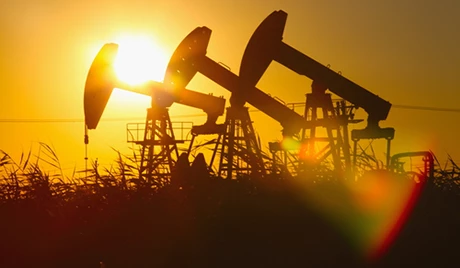Packing an extraordinary amount of energy in little space, fossil fuels helped propel human development to levels undreamed of before the Industrial Revolution, from synthesizing fertilizers to powering space flight. But alongside energy, they produce health-damaging air pollutants and greenhouse gases.
Today, greenhouse gas emissions are higher than at any time in at least 800,000 years and rising, causing climate changes that threaten to reverse decades of development gains. Disruption of livelihoods, loss of food security, loss of marine and coastal ecosystems, breakdown of infrastructure, threats to global security: these are just a few of the risks identified in recent scientific reports.
In the absence of technology to permanently remove greenhouse gases and restore atmospheric concentration to safe levels, there is only one realistic solution: limiting additional emissions. It is estimated that to avoid the most damaging effects of climate change, over the next few decades we can at most emit a quantity equal to about 20 percent of total proven fossil fuel reserves.
Given fossil fuels’ omnipresence in our economies and lives, leaving them in the ground will have important implications, starting with the value of the very assets.
The market value of fossil fuel reserves today – including the 80 percent that can’t be burned, valued at around US$20 trillion – reflects the perception that they are going to be exploited and burned. However, that conflicts with the imperative of limiting greenhouse gas emissions. This divergence in perceptions creates “a situation where asset prices appear to be based on implausible or inconsistent views about the future,” also known as the carbon bubble. The unburnable reserves are seen as stranded assets.
Stranded assets is a term used for investments or assets that lose their value due to changes in the marketplace. The causes for stranding are often associated to significant and frequently sudden changes in legislation, environmental constraints, or technological breakthroughs that cause assets to become non-performing or obsolete. The case of telephone landlines after the development of cell phone networks illustrates how technological change can make some investment less valuable; and the trouble of carmakers specializing in big fuel-consuming SUVs after the rise in gasoline price in the United States shows the vulnerability to price change.
Divergent Views
When it comes to stranded assets related to fossil fuels, the perceptions of the future are indeed divergent.
One the one hand, increasing numbers of jurisdictions – about 40 national and more than 20 sub-national – are implementing or preparing measures to limit carbon emissions, such as carbon taxes, emission trading systems, or restrictive regulation. Global financial institutions such as the World Bank Group are calling on countries and companies to support a price on carbon and urging finance ministers to eliminate fossil fuel subsidies (pdf), estimated to be around $480 billion pre-tax per year and $1.9 trillion when external costs are factored in. The U.S. just announced plans this week to bring down its emissions by regulation. Large institutional investors, faced with financial risks associated with the deflation of the carbon bubble and urged by their stakeholders are already taking steps in divestment from fossil fuels. Financial markets are responding to the concerns and are creating fossil-fuel-free investment indices.
The other perception of the future reveals a belief that fossil fuel use will remain relatively unchanged in the future, a view often found in shareholder reports and seen in large investments in exploration and development of new fossil fuel resources.
The $20 trillion question is whose perception is correct. The markets are currently showing a preference for the latter version of the future. But markets are known for occasional favoring of unfounded optimism about the future, followed by fast adjustments that incorporate a more proper assessment of all fundamentals. And risk aversion toward disasters is an important one.
Dealing with Stranded Assets
One of the big challenges is how to absorb the multi-trillion dollar write-off of fossil fuel assets in the least painful way for everyone, especially for the least wealthy. Livelihoods are connected to fossil fuels directly or indirectly by many threads – from small farmers who have relied on diesel-powered cultivators, to workers whose pensions may be exposed to fossil fuel-related stocks. The owners of fossil-fuels assets and the workers whose job depend on them will be affected by stranded assets, such as when existing coal plants have to close because they are no longer profitable.
To minimize future losses, investors can start to diversify today by adding clean energy assets to their portfolio. These assets will gain value during the transition to a low-carbon economy as fossil fuel assets lose value. For workers, solutions include safety nets and professional training for growing new sectors.
There are good reasons for optimism about overcoming those challenges.
Financing for the transition is increasing every year: green bonds, for example, issued by private companies and public institutions are already in the order of billions of dollars. Those new assets are natural hedges against the burst of the carbon bubble and can be added to pension fund portfolios to protect workers’ savings. In addition to this, many instruments exist to redirect new investment toward clean vehicles and power generation without hurting existing fuel-powered vehicles or coal plants. Such instruments include performance standards, feed-in tariffs, and feebate programs, which smooth the transition toward low-carbon capital without creating stranded assets.



Join the Conversation